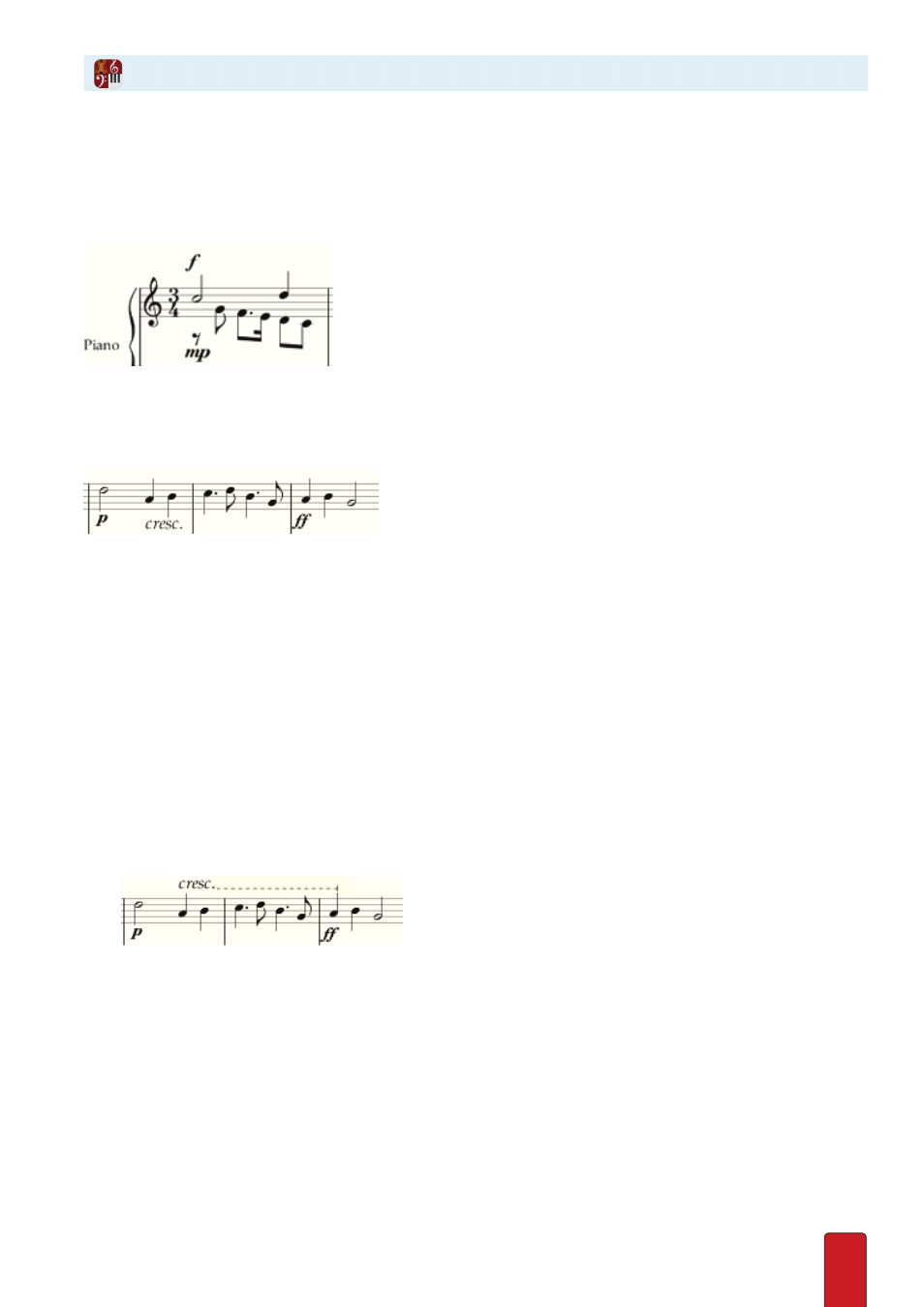PreSonus Notion 6 - Notation Software (Boxed) User Manual
Page 160

10.11
Dynamics on a Multi-Voice Staff
With Notion it is easy to assign different dynamic markings on the two voices in multi-voice
mode . In Edit mode, place
the dynamic mark for the upper voice above the staff and place the dynamic mark for the lower voice below the staff .
This voice-separation feature also enables you to place different crescendo and diminuendo “hairpin” marks on two voices .
Different dynamic markings for two voices on one staff.
Cresc. and Dim. Texts
Notion interprets cresc . and dim . score marks in playback, as long as you inform the
software of the target dynamic level, as with the
ff
in the example below .
Example of crescendo from p to ff.
To add cresc . or dim . marks:
1 . Ensure you are in Edit mode .
2 . For best results, place the start and target dynamic marks (the p and ff marks in the example) into the score first . (Do
not place dynamics for a single voice on top and bottom of a staff)
3 . Complete one of the following to place the mark you want on your Music Cursor:
>
To access cresc ., press the comma key (,) twice .
>
To access dim ., press the period key (.) twice .
4 . Position your Music Cursor with the first letter of the mark at the beat where you want the dynamic change to start .
5 . Complete one of the following:
>
To Enter just the text with no tail (as in the example above), double-click your mouse .
>
To Enter the text with a tail (as in the example below), click once and move (don’t drag) your mouse to the target
dynamic mark, then click to finish (the end of the tail must be on the beat with the target mark) . To avoid clutter in
the example below, we right-clicked the tailed mark and, in the context menu, clicked on Show Above Staff .
◙
Another example of crescendo from p to ff.